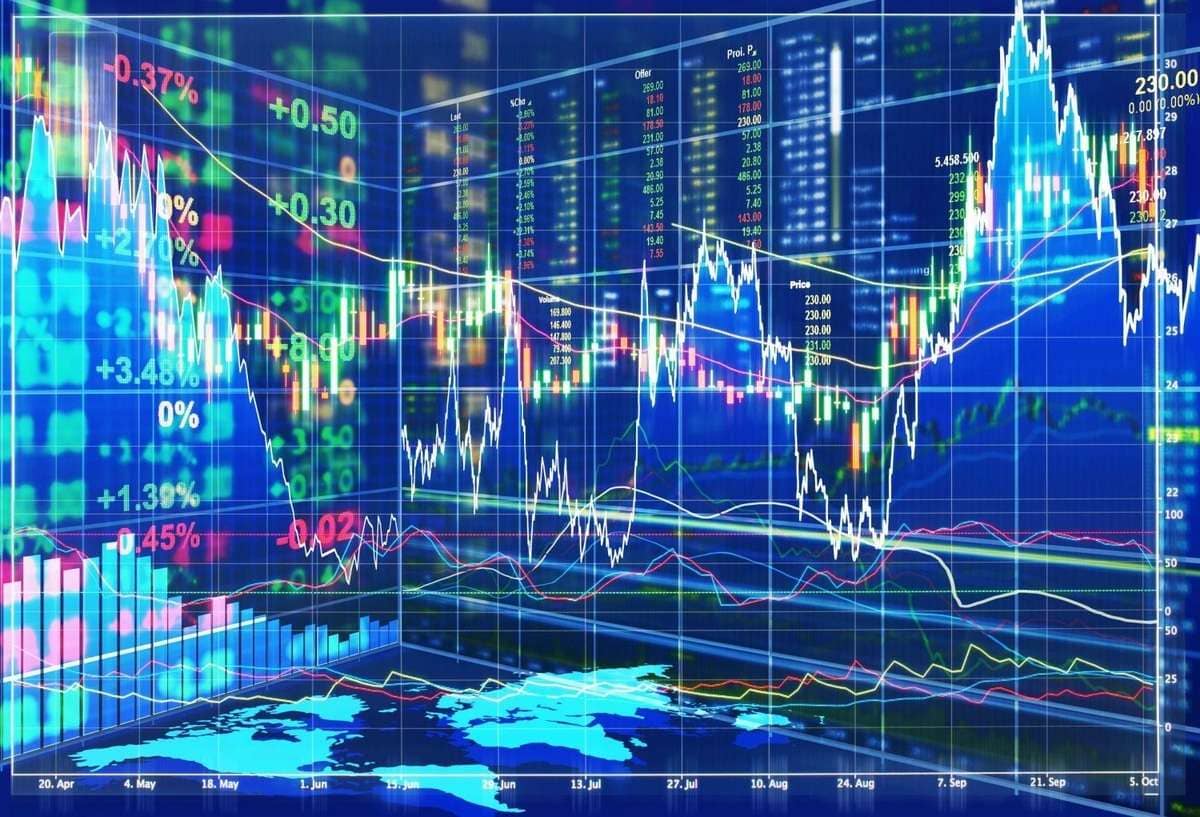Content
With few exceptions, the index’s 50-day moving average has proven to be a reliable support level in recent years. When the price of the S&P 500 rises above the 50-day moving average and keeps up that behavior, it’s likely that the upward trend will continue. So savvy traders will buy when there is a momentary drop below that line.
A swing trader is likely to use different indicators compared with a scalper. Some analysts claim support and resistance are the most important levels since they are present as part of almost every technical indicator. Support levels and resistance levels become more “important” when they are confirmed by two or more different indicators, and using multiple indicators can provide very powerful trading strategies. Indicators that measure the momentum of a stock including overbought and oversold conditions are momentum indicators. Basic momentum indicators come pre-programmed in most charting/trading platforms. These indicators help traders to better time their entries and exits.
Supply, Demand, and Price Action
Technical analysis is a trading discipline employed to evaluate investments and identify trading opportunities by analyzing statistical trends gathered from trading activity, such as price movement and volume. Unlike fundamental analysis, which attempts to evaluate a security’s value based on business results such as sales and earnings,technical analysisfocuses on the study of price and volume. Anyone who trades or invests in the stock market or any other tradable financial instrument should consider learning at least a basic level of technical analysis. It your money is invested into a position that has price movement, then technical analysis will help you make better-informed decisions as to how much risk to employ for how much potential reward. Technical analysis can be applied to any security with historical data, from stocks to bonds, currencies to commodities, and anything in between. As long as there is past price information, there’s an opportunity to use technical analysis.
- Its application is found in various markets, including stocks, bonds, currencies, metals, and commodities.
- If the prices fluctuate a lot, it shows high volatility, and a currency pair where prices are stable have low volatility.
- Next, if you’re going to learn fast, seek assistance from a professional trader who can teach you everything in-depth in one-on-one sessions or practice backtesting for a more cost-effective option.
- Technical analysis differs from fundamental analysis in that the stock’s price and volume are the only inputs.
- In this study, the authors found that the best estimate of tomorrow’s price is not yesterday’s price (as the efficient-market hypothesis would indicate), nor is it the pure momentum price .
- Is a technical pattern used to predict the predetermined levels at which the stock price or asset is expected to halt and retrace itself.
Ultimately, a fair value is arrived at after comparing several models and ratios. The high-volume markets are less susceptible to price manipulation and abnormal external influences that could create false signals and render TA useless. If you are a value investor, there is no perfect way to analyze a stock. Even so, many successful investors will tell you that focusing on certain fundamental metrics is the path to cashing in on potential gains. The idea of mixing technical and fundamental analyses is not always well received by the most devoted groups in each school, but there are benefits to understanding both approaches.
Pictorial Price History
This theorem is similar to the strong and semi-strong forms of market efficiency. Technical analysts believe that the current price fully reflects all information. Because all information is already reflected in the price, it represents the fair value, and should form the basis for analysis.
Before the open, the number of buy orders exceeded the number of sell orders and the price was raised to attract more sellers. The close represents the final price agreed upon by the buyers and the sellers. In this case, the close is well below the high and much closer to the low. This tells us that even though demand was strong during the day, supply ultimately prevailed and forced the price back down. By looking at price action over an extended period of time, we can see the battle between supply and demand unfold.

The bigger the second candle and the higher it advances, the stronger the signal. Spread bets and CFDs are complex instruments and come with a high risk of losing money rapidly due to leverage. 78% of retail investor accounts lose money when spread betting and/or trading CFDs with this provider.
What is multiple timeframe analysis?
This series of numbers is nothing but natural numbers, beginning with 0 and 1. Each next number in the series is derived by adding two previous numbers in the row. Hence, the numbers formed are – 0, 1, 1, 2, 3, 5, 8, 13, 21, 34, 55, 89, 144, 233, 377, and so on. If it is above 70, the prices are in the overbought region, while below 30, it is in the oversold zone. Line ChartsThe line chart is a graphical representation of data that contains a series of data points with a line.
For sure – I spent many years doing the same (trying to mix fundamental and technical analysis). Focusing just on a technical process with no noise was a definite game changer. I pay very little attention to what is going on in the fundamental or macro world nowadays
— Adam Mancini (@AdamMancini4) January 22, 2023
The best way to accomplish this goal will vary according to factors such as the investor’s risk tolerance and time horizon. But there are some principles and techniques that are applicable for many different types of investment objectives and growth strategies. There is no guarantee that either of these investment approaches will work under all market conditions. Stocks fluctuate in value fundamental and technical Analysis due to a variety of risk factors, including changing economic, political, or market conditions, or in response to events that affect particular industries or companies. Each investor should evaluate their ability to invest for a long term, especially during periods of downturns in the market. Alternatively, some primarily technical traders will look at fundamentals to support their trade.
Breadth indicators
The core assumption of technical analysis, on the other hand, is that all known fundamentals are factored into price; thus, there is no need to pay close attention to them. Technical analysts do not attempt to measure a security’s intrinsic value, but instead, use stock charts to identify patterns and trends that might suggest what the security will do in the future. Professional technical analysts typically accept three general assumptions for the discipline. The first is that, similar to the efficient market hypothesis, the market discounts everything. Second, they expect that prices, even in random market movements, will exhibit trends regardless of the time frame being observed. The repetitive nature of price movements is often attributed to market psychology, which tends to be very predictable based on emotions like fear or excitement.
The MACD is generated by subtracting two EMAs to create the main line . The first line is then used to generate another EMA, resulting in a second line . In addition, there is the MACD histogram, which is calculated based https://xcritical.com/ on the differences between those two lines. People have many different styles and tastes when it comes to money, but making your money grow is typically considered one of the most fundamental of investment objectives.
tips for setting up your charts
For every positive pattern, there is usually a negative alternative and this is also the case when it comes to divergence. When a market is making higher highs, but the RSI is not following suit, this is referred to as ‘bearish divergence’ and can be a warning that a top is near. As indicated by the blue and red arrows below, the market was strong towards the middle of the month but the RSI then makes a lower high than previously, suggesting that momentum may be starting to fade away. If a stock you thought was great for the last 2 years has traded flat for those two years, it would appear that Wall Street has a different opinion. If a stock has already advanced significantly, it may be prudent to wait for a pullback.
It certainly pays to be aware when major fundamental news is being released. At the very least, even the most committed chart traders should know when the various central banks around the world are due to announce interest rate or other policy decisions. This, coupled with the release of major data such as unemployment numbers, can really move the markets. Trading with a head-in-the-sand approach around these releases can be expensive, as market volatility often picks up. As a new trader, which path should you follow and what approach works best?
Instead, the investor focuses on analyzing the stock chart itself for hints about where the price may be headed. Use charts and technical indicators to uncover trends in stocks and other investments. By using indicators and patterns, technical traders aim to spot when new trends are forming. Many traders, for example, will use fundamentals to find underpriced markets – then use technical analysis to plan exactly when to enter and exit their position.
Candlestick Patterns – Dojis
While stock charts can be shown in weeks, days, or even minutes, fundamental analysis often looks at data over multiple quarters or years. It is important to note that the principles of technical analysis can only be applied to those securities the prices of which are influenced solelyby the market forces of supply and demand. When other forces come into play in influencing the price movement of a security, technical analysis is no longer viable. Anyone who buys or sells stocks may even do a lighter form of technical analysis without realizing it. In that case, you’ve just used a form of technical analysis to inform your investment.
Strategic thinking – reading charts and patterns is a skill that allows for independence and personal trading style. Each trader may see new details that may not be evident to other traders. Identifying trends – being able to identify trends is vital since the market is known to repeat them. Knowing when there’s a continuation of a trend, a stall, or a trend reversal offers investors opportunities to capitalize on when to enter or exit the market to profit from buying or selling at the optimal times. For further information on technical analysis, review this segment of the Investors Underground free beginners day trading course.
Financial StatementsFinancial statements are written reports prepared by a company’s management to present the company’s financial affairs over a given period . To draw an uptrend line, a technician draws a line connecting the lows on the price chart. To draw a downtrend line, a technician draws a line connecting the highs on the price chart. Relative strength analysis is based on the ratio of the prices of a security and a benchmark and is used to compare the performance of one asset with the performance of another asset. Volume indicators are typically shown as histograms that illustrate the level of buying and selling in a given trading session or time period. To forecast where a price may be heading, the chartist wants to see where it’s been relative to where it is now.
What volume says about stocks
It would be folly to disagree with the price set by such an impressive array of people with impeccable credentials. Technical analysis utilizes the information captured by the price to interpret what the market is saying with the purpose of forming a view on the future. Fundamental analysis considers the value of the business entity to make investing decisions, rather than historical stock price patterns. The value of the company’s assets, debt, and operational performance issues, such as profitability and cash flow, are relevant data for conducting fundamental analysis.
When it signals a change in direction, it’s called a reversal pattern. Both are used to explore current price movements and predict future price movements. This is going to depend in many ways on your trading style or strategy.




